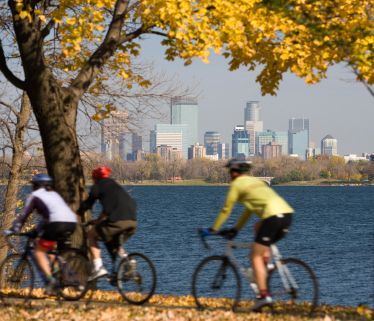The gist:
Easing requirements for parking—as some Northwest cities are doing—would make the price of parking reflect its true costs, make housing more affordable, and reward northwesterners for driving less.
The details:
Antiquated provisions in zoning and tax codes, along with misguided street designs, bloat the Northwest’s parking supply and glut the market.
The 16 most populous Northwest counties and cities all require off-street parking; suburbs require even more parking than cities. Besides distorting the cost of driving, mandated parking lowers a community’s density by 10 to 30 percent, leaving residents dependent on their cars.
In the Pacific Northwest, for example, office buildings are required to provide up to four spaces per 1,000 square feet of floor space. Retail developers devote more space to cars than to merchandise.
The resulting oceans of parking not only invite employees and customers to drive; they also discourage other modes of travel by interposing parking lots between streets and buildings and by separating the destinations people want to reach.
A few communities have recently begun shrinking parking requirements. In 2005, Seattle, for example, limited requirements for parking in downtown areas targeted for growth. Portland and Olympia have also implemented some parking reforms. A much more basic reform would be full deregulation, allowing the market to decide how much parking space to provide.
By striking all off-street parking requirements from the law books, it would be left up to property owners to decide on the amount of parking space. Many owners, especially real-estate developers, would put less land into parking and more into buildings, increasing the supply of office space and housing. With an increase in the supply, consumers could shop around for the most affordable space, causing prices to decrease.
These changes also work for existing developments. With no parking requirements, the owners of buildings now surrounded by concrete would have new choices: they could expand, sell land to others, or turn parking into plazas.
It might take 10 years to absorb excess parking space, but scarcity and a market would develop. Free parking would dwindle as higher-value uses would take over space currently devoted to car storage. And, as those who choose to drive begin to face the full costs of their decisions, driving would abate.
A few promising related reforms:
- The Northwest could eliminate inequitable tax provisions that favor driving over other forms of transportation. At present, taxes encourage employers to supply free parking by treating it as a nontaxable fringe benefit.
- Employers who offer free parking could be required to offer “cash out” policies, giving workers the option of choosing between a parking space and the parking’s dollar value in cash. Tests of this policy show that as many as two in five commuters will take the money and leave their wheels.
- If tens of millions of workers across the country left their cars at home, and tacked an extra $2,000 onto their paychecks, it could save more than a million barrels of oil a day, not to mention safeguard the livability of our communities.
More resources
Victoria Transport Policy Institute’s Parking Management Best Practices
Excerpted from This Place on Earth 2001: Guide to a Sustainable Northwest (see pdf for full details and endnotes)








